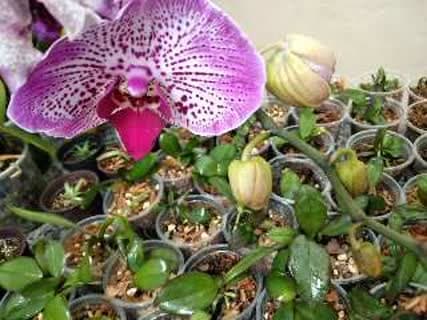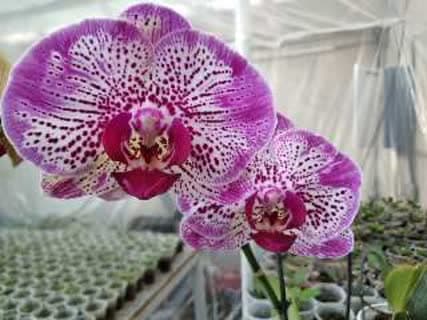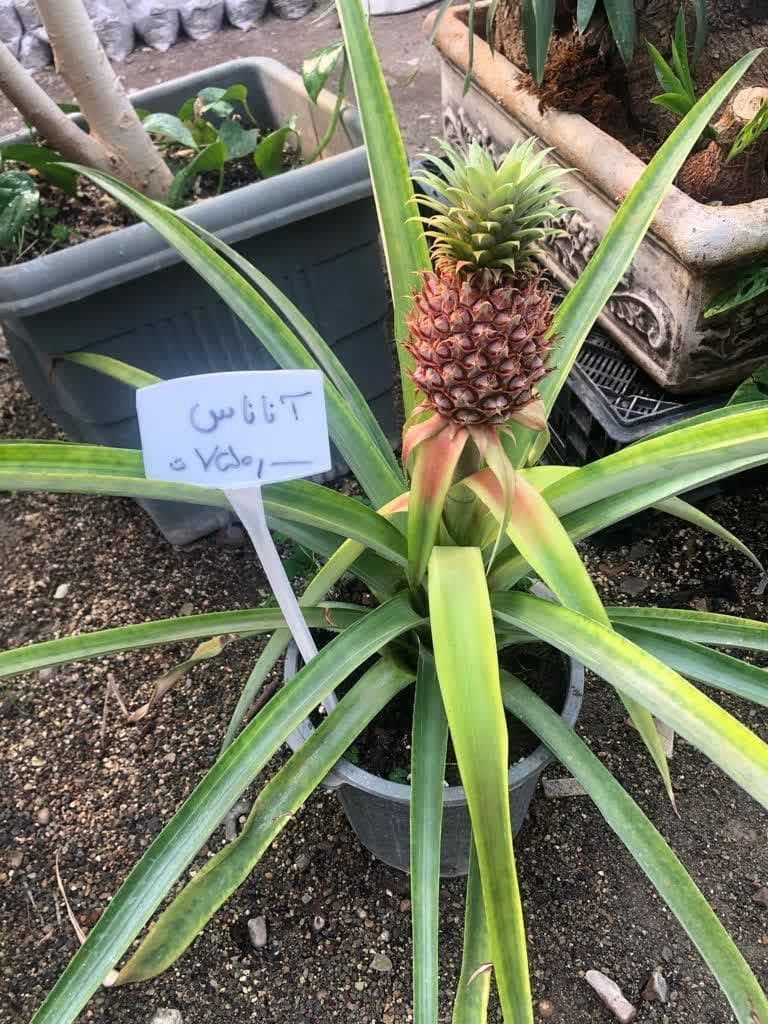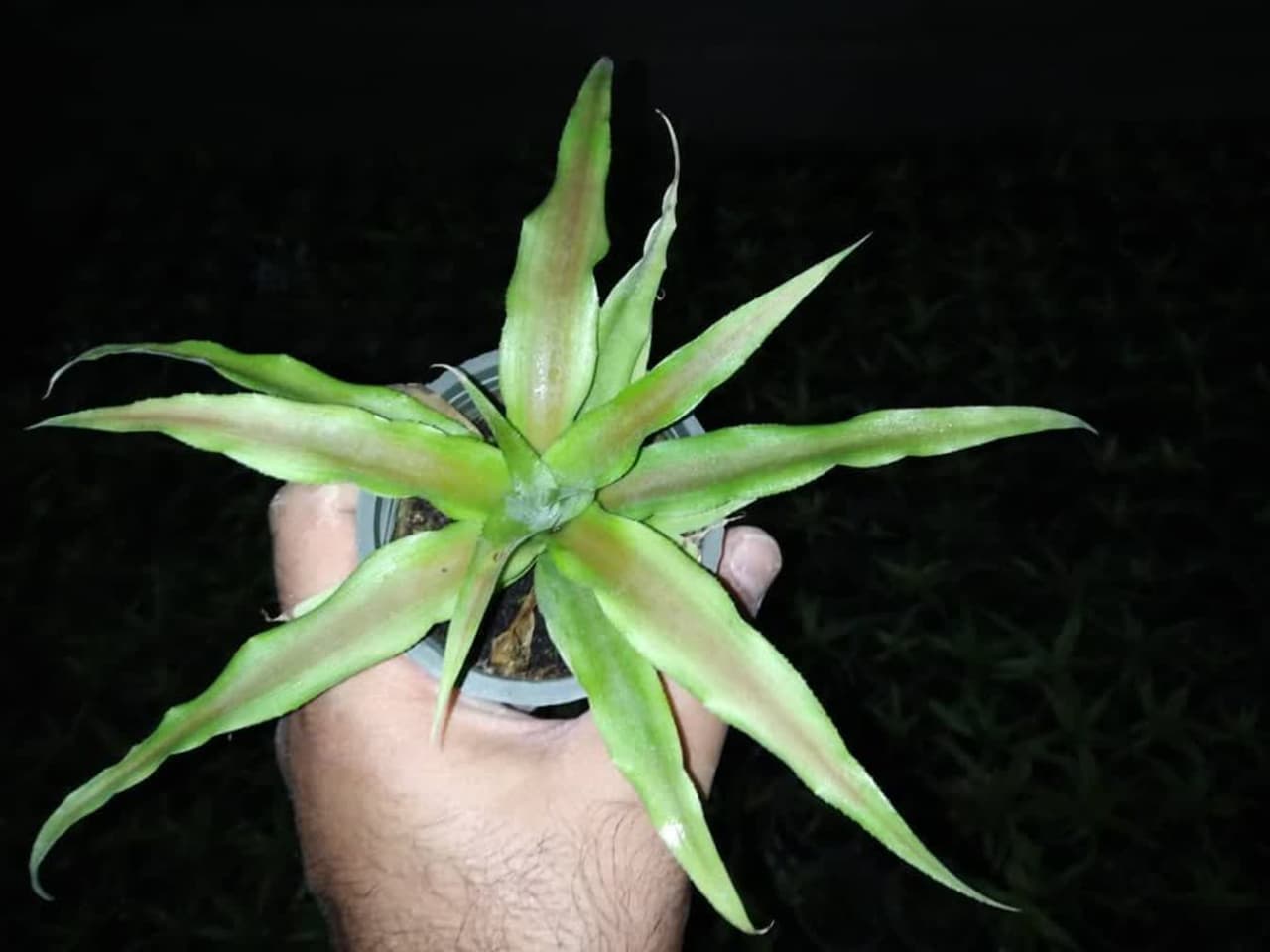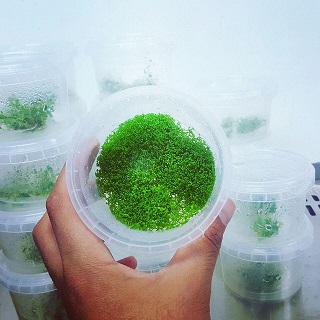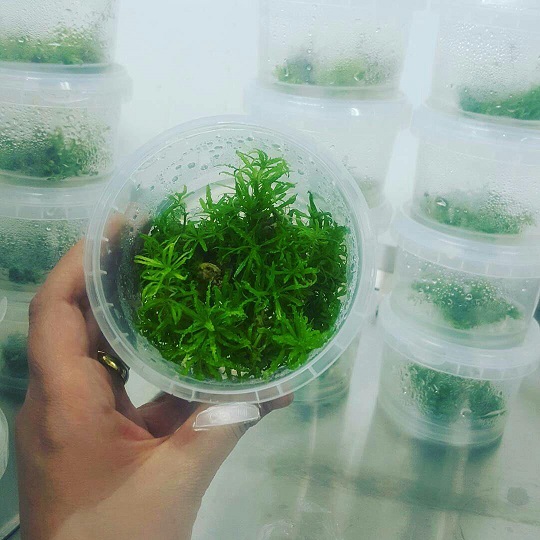Phalaenopsis orchid
- Sold as seedlings and double leaves
- Price: 30,000 to 50,000
Tissue culture methods can be a suitable method for orchid production. The first work done on tissue culture of orchids is related to seed culture in a sterile environment. Orchids are among the oldest and most evolved plant families with 800 genera and 25,000 species. Due to their popularity, these flowers have been able to account for 8% of the world trade of flowers and ornamental plants. The beauty of orchids is due to the color, shape, variety of flowers and their existence from the coldest to the hottest parts of the world. Cultivated 3,000 years ago by the Japanese and Chinese, they cultivated orchids such as Dendrobium and Cymbidium for their delightful fragrance. Phalaenopsis is one of the most famous orchids in the world. This orchid is one of the monopodial orchids, Phalaenopsis is native to Southeast Asia and countries such as Singapore, Malaysia, Philippines, Thailand, Indonesia and also northern Australia.
Pineapple
The scientific name of pineapple is Ananas comosus. It is monocotyledonous, herbaceous and perennial from the Bromeliaceae family. The inflorescence and its fruit are terminal, so it is a monocarp after the flowering stem is destroyed and then the peduncles take their place. The leaves are leathery and elongated and placed spirally in the central axis, it does not have a distinct stem and has a rosette shape. The whole multiple fruit has a large number of flowers on one whale between 100 and 200 flowers. Each main fruit is seta. The fruit growth curve is sigmoid. A change in the color of the fruit from green to yellow is a sign of ripeness. The degree of treatment depends on the type of use. Reaching is done from the bottom to the top and from the center to the outside, so not all of them arrive at the same time. In compote, it is harvested when 50% of the color change is seen in the whole fruit, but in fresh eating, the harvest depends on the distance from the place of production to consumption. Available pineapple cultivars MD2 and Comosus
Aquatic or aquarium plants
Aquarium plants have a very important role in maintaining the ecological balance in the aquarium ecosystem. In addition to creating beauty in the aquarium space, these plants provide an environment close to the natural life environment of ornamental fish. One of the main benefits of using aquatic plants in the aquarium is to adjust the water hardness and pH, increase the dissolved oxygen in the water, and finally preserve and ensure the relative health of the fish. Aquarium plants are a very safe environment for ornamental fish, which enables them to hide around leaves and stems. Plants are the first cycle of food production, which perform photosynthesis by absorbing light and carbon dioxide gas from the environment, and the first available food for aquarium fish include: herbivorous and omnivorous species. Aquarium plants play a very important role in creating balance in the aquarium ecosystem and while making the aquarium environment look beautiful by absorbing carbon dioxide gas and other harmful gases from the water environment, they provide the oxygen needed by the aquatic animals in the aquarium. In addition, these plants are a suitable place for the hiding of some species and a stimulus for the production of the same and the beginning of the behaviors of the production of the same. By absorbing suspended substances and harmful bacteria in the water, aquarium plants make fish healthy and are used as temporary food for fish in some cases. In addition to beauty, these plants should have characteristics such as: relatively small, relative growth resistant to changes inside the aquarium. Aquatic plant varieties available for order:
- Alternatra
- Estrogen
- Bacopa
- Rotella
- Pogstemon
- Hemianthus
- Cuban Hemianthus
- Glosso stigma
- Monte Carlo grass
- Busflandra
- Achinodros red


 فارسی
فارسی العربية
العربية
